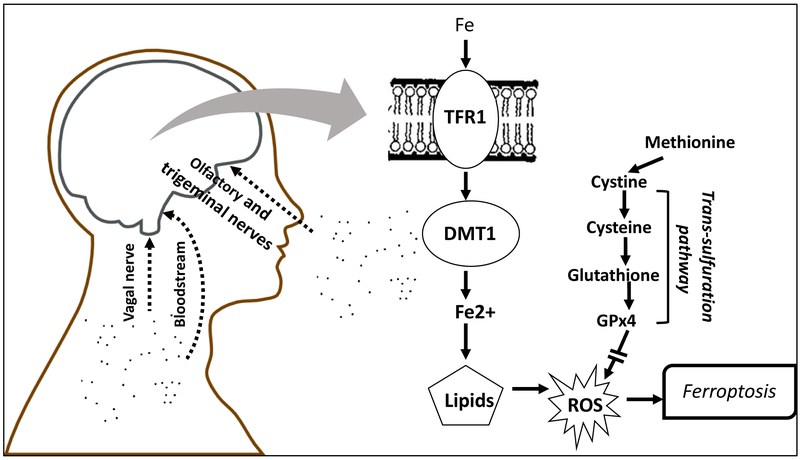Figure 1.
Schematic diagram showing entry routes of ultrafine particles to brain via olfactory and trigeminal nerves, vagal nerve and blood stream. The consequent elevation of brain metals as contaminants of ultrafine particles, e.g., Fe, raise the potential for ferroptotic mechanisms of brain neuropathology associated with air pollution. Both transferrin bound and non-transferrin (labile) Fe can be released into cells with Fe3+ (ferric iron) reduced to Fe2+ (ferrous iron) followed by movement into cytosol via the divalent metal transporter-1. Potential increases in the redox active Fe2+ can lead to reactive oxygen species via the Fenton reaction and lipid peroxidation. Ferroptosis is negatively regulated by glutathione and glutathione peroxidase 4, derived from the trans-sulfuration pathway, which if reduced can facilitate ferroptosis, an iron- and lipid peroxidation-dependent form of cell death. TRF1 = transferrin; DMT1 = divalent metal transporter 1; ROS = reactive oxygen species; GPx4 = glutathione peroxidase 4.

